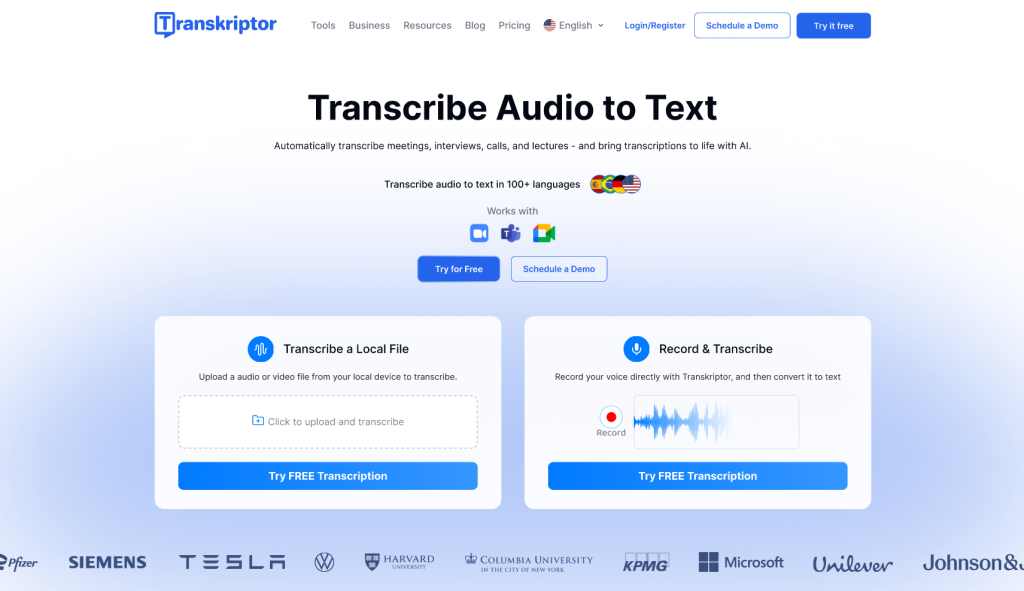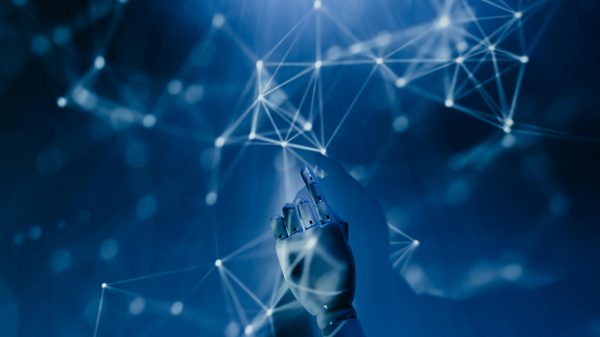For decades, traditional manual note-taking served as the primary method of information preservation. At the same time, it reinforced memory and created tangible records. Today’s global, digital workspace demands solutions that manual methods cannot deliver.
Remote collaboration across continents, platforms, and time zones requires speed, clarity, and instant knowledge access that notebooks and basic text files can’t provide. This evolution hasn’t eliminated note-taking but transformed it from manual effort to automated and AI-powered solutions like Transkriptor, enabling higher-order productivity.
Remote Work Changed the Rules
Remote work did not invent the need for better documentation, but it magnified its urgency. Video conferencing platforms such as Zoom, Microsoft Teams, and Google Meet have become essential tools, facilitating everything from executive briefings to casual team updates. According to a Statista report, Zoom has been experiencing a constant increase since 2019, as it generated revenue of more than $4.5 billion in 2024.
This surge exposed a fundamental flaw: professionals cannot effectively participate in meetings while simultaneously recording accurate notes. Additionally, asynchronous communication—now standard practice—requires easily retrievable and shareable records for teams across different time zones. The individual note-taking model simply doesn’t scale in modern work environments.
The Limitations of Manual Note-Taking
Manual note-taking, whether pen or keyboard, introduces weaknesses that digital-first workplaces cannot afford. Its key limitations include:
- Inconsistency and Error: Human note-takers miss details during fast-paced discussions, with memory-based reconstruction introducing inaccuracies.
- Lack of Standardization: Notes vary dramatically in format and completeness, creating knowledge gaps.
- Time and Productivity Drain: Post-meeting tasks such as transcribing minutes, formatting notes, or consolidating inputs from multiple attendees consume valuable work hours and affect productivity.
- Limited Shareability: Handwritten notes often remain siloed, making them difficult to integrate into collaborative tools such as project management software, CRM systems, or shared drives.
- Cognitive Load: When switching regularly between tasks, the brain has to stop and restart the previous task, which puts strain on working memory. This can lead to cognitive overload, making it harder to concentrate and reducing the quality of work.
These challenges manifest daily in delayed deliverables, misaligned actions, and communication errors.

AI-Powered Tools Step In
AI has introduced a new paradigm in information capture. Platforms like Transkriptor offer high-accuracy speech-to-text conversion, 100+ language support, speaker identification, and intelligent summarization, eliminating error-prone manual documentation.
Key technological advances include:
- Natural Language Processing (NLP): AI transcription tools now understand various accents and technical terminology with remarkable accuracy, much like how an experienced assistant adapts to different speakers’ communication styles.
- Speaker Diarization: Modern systems can identify who said what during meetings, eliminating the confusion of unmarked dialogue in traditional notes and preserving the context of each contribution.
- Keyword Highlighting and Summarization: Rather than presenting walls of text, AI tools distill conversations into actionable insights and key takeaways, similar to how an executive assistant might prepare a concise meeting brief.
- Meeting Insights: AI-powered tools offer in-depth meeting insights, such as speaking tone (neutral, positive, or negative) and speaking time, which help in understanding attendees’ involvement in the meeting.
According to the Grand View Research report, the global speech recognition market was $20.25 billion in 2023 and is likely to grow at a rate of 14.6% from 2024 to 2030.

The New Standard: Automation-First Productivity
Leading organizations are embracing a fundamental shift in how they manage information: the automation-first approach. Professionals reserve their mental energy in this framework for strategic thinking and creative problem-solving while delegating routine documentation to intelligent systems.
Instead of active participation in document meetings, teams allow AI to handle transcription and indexing automatically. The resulting summaries flow directly into project management systems, while searchable archives make previous discussions instantly retrievable without digging through notebooks or scrolling through chat histories.
This transformation enhances efficiency and collaboration quality. Team members engage more deeply in discussions, contribute more meaningfully to solutions, and think more critically about challenges—all while maintaining complete confidence that nothing important will be lost. In this context, manual note-taking is no longer the benchmark for diligence—it has become a fallback option when automation is unavailable.
Conclusion: The End of an Era?
The decline of manual note-taking as a workplace standard marks a pivotal moment in knowledge work evolution. Remote collaboration, AI capabilities, and productivity demands have converged, making manual capture methods insufficient.
Organizations that adapt will reclaim valuable time and position themselves for greater innovation and agility. Transcription platforms like Transkriptor are leading this transformation, offering intelligent solutions that convert spoken dialogue into searchable, shareable knowledge assets with minimal human intervention.
Manual note-taking isn’t dead—it’s been reassigned. It is no longer a frontline necessity but a valuable companion to an increasingly automated core where advanced transcription technologies handle the heavy lifting of information capture and organization. As businesses continue to optimize for efficiency, adopting AI-powered transcription tools will become not just advantageous but essential for staying ahead in a competitive market.















